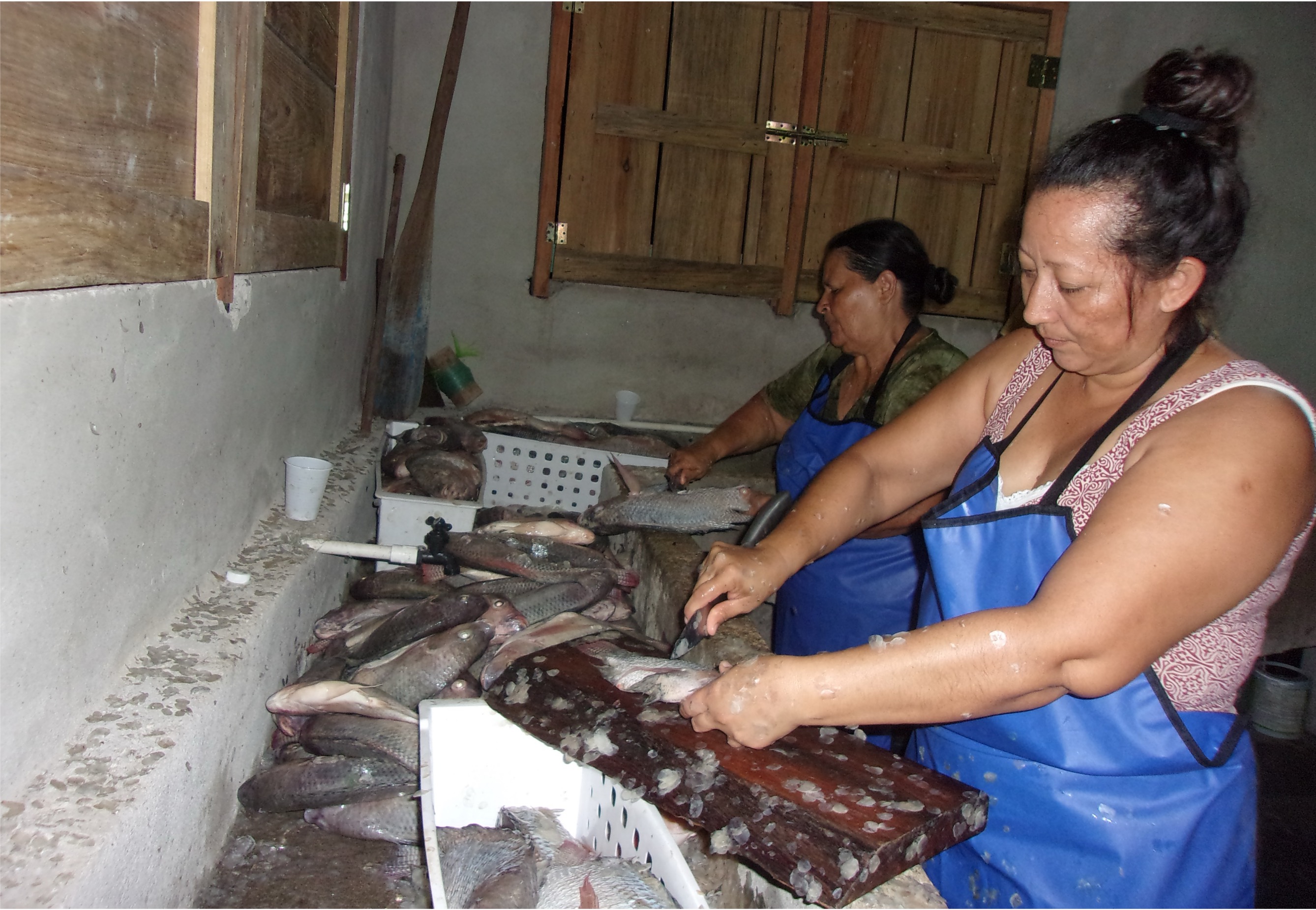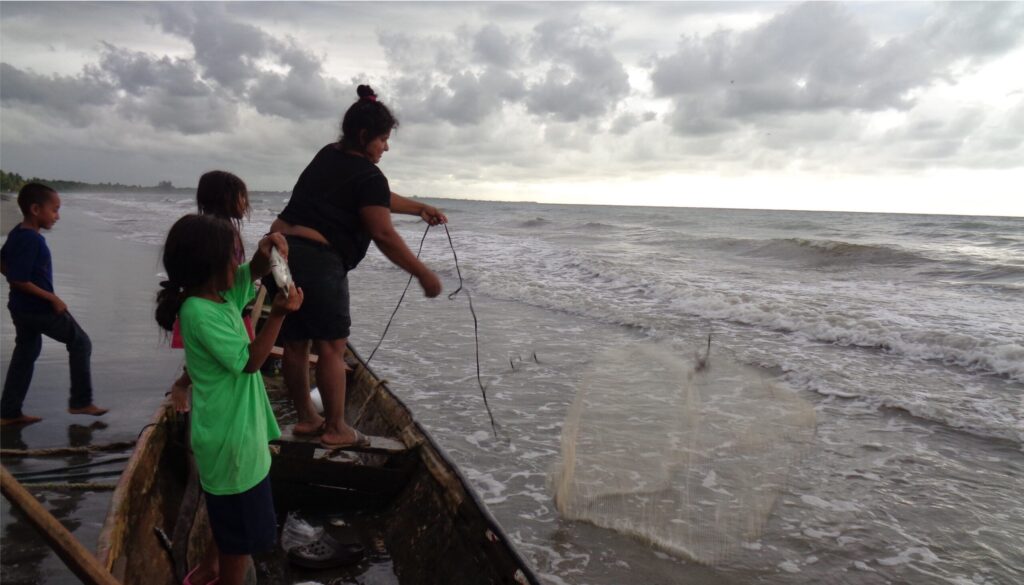by Erin Minor

Worldwide, an estimated 600 million people at least partially depend on fisheries and aquaculture for their livelihoods. This makes marine conservation important not only to protect vulnerable species and ecosystems, but to ensure these communities have sustainable food and income. However, when creating marine protection plans, local women are often left out of the conversation, causing valuable information to go unheard.
Marine protected areas (MPAs) are one of the most common tools in marine conservation. There are currently over 18,000 MPAs around the world, covering about 8% of the Earth’s oceans. As the clock ticks down to meet the United Nations’ “30 by 30” initiative, which aims to protect 30% of the ocean by 2030, MPAs are one of the best ways to do this.
That said, MPAs are not a one-size-fits-all solution. The strictest MPAs—called “no-take zones”—prohibit fishing of any kind. However, when coastal communities economically depend on fishing, looser MPAs often allow sustainable fishing practices in certain spots. This ensures they can meet the needs of both the communities and the environment. But this requires understanding how people engage with marine resources. And it’s frequently where women’s voices are missing.
“Women are engaged in the same sectors—fishing and tourism—but they play different roles and make use of different marine species,” said Sara Bonilla Anariba, a former postdoctoral fellow at the Smithsonian Environmental Research Center (SERC). Bonilla Anariba now works at the Kenya branch of WorldFish. After witnessing this firsthand while working with MPAs in Honduras, she led a new study exploring the issue and looking for solutions.
Overlooked Shores
“If you’re not talking to the women who collect in the mangroves, it can be easy to assume that the mangroves have no economic value.” – Steve Canty
In the Mesoamerican reef of Central America, men typically take boats out to do commercial fishing in the reefs. Women often stay closer to shore, collecting clams, crabs or other species that live in the mangroves along the beach. This practice goes by the name “gleaning.” It involves foraging for invertebrates that live on the roots of the mangroves.
“Due to lack of access to boats and fishing equipment, as well as domestic labor requirements that prevent them from spending all day on the water, women tend to do fishing activities along the shore,” said Bonilla Anariba.
Plans for MPAs often overlook this coastal perspective. Instead, they tend to focus on preserving biodiversity and creating sustainable fishing practices in deeper waters. Meanwhile, they leave out the shoreline ecosystems women rely on.
This unbalanced approach has ramifications for the fish as well.
“Fish species use different ecosystems throughout their lives,” said Steve Canty, a coauthor and marine biologist at SERC. “Important fishery species like groupers and snappers spend their juvenile years in the mangroves and seagrass beds, while grunts are in the reefs during the day and return to the mangroves and seagrasses at night.”
Canty explains that when managers create MPAs using only input from fishermen, mangroves can end up as no-take zones. This means no fishing or collecting allowed, or reduced access to these areas.
“If you’re not talking to the women who collect in the mangroves, it can be easy to assume that the mangroves have no economic value and that by reducing access to the ecosystem, juvenile fish are protected,” said Canty. “But there are many adult shellfish in these areas that make up important fisheries.”

Another key role many women in Central America play involves cleaning and preparing the fish for commercial sale. The hands-on process of taking off scales and cleaning out guts gives women a closer insight into the fishes’ health. They can tell when fish eating habits change, or if the fish are changing in size.
“They often notice things about the fish that nobody else does,” said Canty. “Having that information allows you to get a better picture of the health of the fishery and the success of the conservation efforts. It’s a huge amount of data that goes missing when we only focus on the men who are involved in the active process of catching the fish.”
Community Collaboration
To help MPA managers ensure they include women’s perspectives, Bonilla Anariba created a self-assessment tool as part of the paper. She designed it to help managers reflect on women’s level of involvement in marine protection plans. It includes questions like whether the plan includes different uses of marine resources, whether both women and men participated in the plan’s design, and if the MPA planning team took actions to ensure equal participation and roles in decision making.
“I’ve had a few organizations reach out expressing interest in using this, so the next step will be seeing how it works in practice,” said Bonilla Anariba.
Arie Sanders, who coauthored the paper with Bonilla Anariba and Canty, has spent years doing trainings for MPA management organizations, teaching them how to engage local communities in monitoring protected areas.
“If the data collected isn’t gender-sensitive,” said Sanders, “it becomes difficult for MPA managers to make informed decisions that don’t exclude more vulnerable groups, such as women.”

Bonilla Anariba said she has seen MPAs have greater success when communities, including women, play a more active role. As efforts continue to reach the goal of a 30% protected ocean, it’s important to be strategic about marine protection, so MPAs can be as effective as possible.
“There are MPAs that were created 40 years ago that are doing less conservation than ones created 15 years ago, simply because they don’t have the involvement of the local community,” Bonilla Anariba said.
It’s often a challenge for MPAs to strike a balance between preserving biodiversity and protecting the needs of nearby communities. But a previous study led by SERC has shown these goals don’t have to be mutually exclusive. When MPAs have good enforcement, nearby communities can experience greater relative prosperity and improved health. This new tool may make MPA management even more powerful and enhance the benefits MPAs can bring to nearby communities.
All photos were provided by Sara Bonilla Anariba. Due to lack of information about the photographers’ last names, we listed their first names and where they are from. A full copy of the article, “Promoting gender equity in marine protected areas: A self-assessment tool,” is available at https://doi.org/10.1016/j.marpol.2024.106526
Dive Deeper Into Marine Protection
Marine Protected Areas Improve Health, Wealth of Nearby Communities
New Study Reveals Large Holes In America’s Ocean Protection. Here’s How We Can Fix Them.
Adult Fish Aren’t Truly ‘Protected’ in Marine Protected Areas
U.S. Needs to Diversify Marine Protected Areas to Reap Full Benefits

